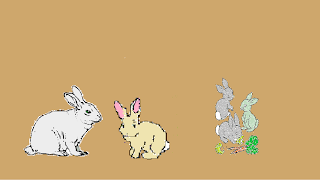Hello everyone!
I am going to tell
you a story…
Once upon a time there was a class full of
bilingual students that studied to be the best teachers.
One day Raquel (their teacher) told
them a story, The Princess and the Dragon. This story was very funny and
she illustrated it with a power point and GESTURES!! Then Raquel said: “You
have to make a similar story” and the students very surprised started to think
about how they could create a story similar to Raquel’s.
Suddenly Patri, Inma, Dani and Jessy started to think about the
new story. “How can we connect it with the curriculum?” asked Dani. “Don’t worry” replied Jessy, “I have an idea and we are very
imaginative”. So they started to think. They thought and
thought and thought and finally they created a new story.
Patri, Inma, Dani and Jessy told the story to all the
class and they were going to remember it ever after.
This is an example of a story. I want to
prove that creating a story is very easy and we can create it with any topic.
As Raquel taught us, everything that we tell is a story, it can be written or
not.
This story explains
what we did in class the other day, we have created a story with the structure explained
in the Literature class of a typical tale (you can see the structure in blue colour in the story) and it is
called The Rabbits and the Fox. It is about a grey
rabbit that meets a cute rabbit in the countryside, then a
horrible fox appears and the rabbits run to the den. We have
created a power point and some gestures to illustrate the story. Clicking on this
link you can see the video:
And the slides that we have
created related to it:
Another way to represent the story is with a role-play, where we can decorate the class like in a story. In class
we represented We’re going to the bear
hunt by Michel Rosen, we did not use any material, the class was
divided in groups and then a group represented all the elements (grass,
river…).
From my point of view these activities are easy to do in schools with the
children of any level, since Infant Education to the last level of Primary
Education. They are funny, dynamic, interesting and purposeful. We can add some
elements of other subjects like Science, Music or Arts and
Crafts. For example, our activity was related with Science and the food chain, the rabbits eat carrot and the fox
want to eat the rabbits, and the animals have different adjectives, so they
learn new vocabulary.
What do you think?







